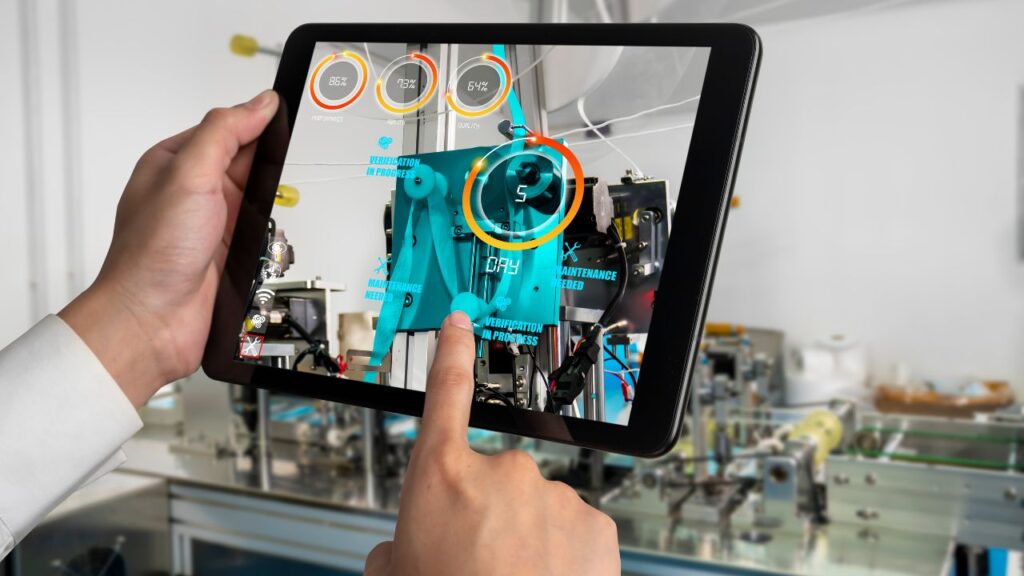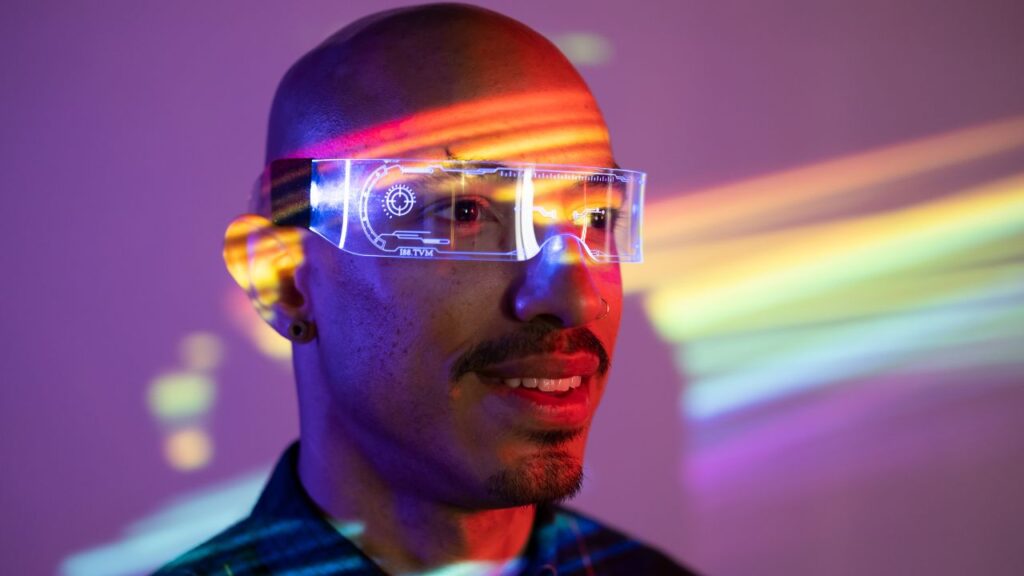In the rapidly evolving landscape of advertising, augmented reality (AR) is emerging as a groundbreaking tool that bridges the gap between the physical and digital worlds. By integrating interactive digital elements into real-world environments, AR offers brands a unique opportunity to create engaging, memorable experiences for customers. This article explores how AR is transforming advertising, driving customer engagement, and setting the stage for the future of marketing.
1. What is Augmented Reality in Advertising?
Augmented reality overlays digital elements—such as images, sounds, or interactive features—onto the physical world through devices like smartphones, tablets, or AR glasses. In advertising, AR transforms traditional campaigns into immersive experiences, allowing customers to interact with products or services in innovative ways.
Unlike virtual reality (VR), which creates entirely separate digital environments, AR enhances the real world, making it a powerful tool for engaging audiences without requiring additional hardware beyond what many people already own.

2. The Rise of AR in Advertising
The adoption of AR in advertising has been fueled by advancements in mobile technology, faster internet speeds, and increasingly sophisticated AR software. Companies like IKEA, Snapchat, and Nike have already showcased the potential of AR to captivate audiences, with interactive campaigns that allow users to try furniture in their homes, apply virtual filters, or customize shoes.
According to a report by Statista, the global AR advertising market is projected to reach $8.8 billion by 2024, reflecting the growing interest of businesses in leveraging this technology. The ability to create personalized, immersive experiences positions AR as a powerful tool for brands to stand out in a crowded marketplace.
3. Benefits of AR in Advertising
a. Increased Engagement
AR grabs attention by offering interactive and visually appealing experiences. Studies show that AR ads can hold user attention for 75 seconds or more—significantly longer than traditional digital ads.
b. Improved Customer Experience
By offering tools to visualize products, AR helps customers make informed decisions. For instance, makeup brands like Sephora let users virtually try on products, reducing the need for physical trials.
c. Enhanced Brand Recall
Interactive experiences create stronger emotional connections, leading to better brand recall. Customers are more likely to remember brands that offer unique and engaging experiences.
d. Data Collection
AR platforms can track user interactions, providing valuable insights into consumer preferences and behavior. This data helps brands refine their marketing strategies.
4. Innovative Uses of AR in Advertising
a. Virtual Try-Ons
Fashion and beauty brands are using AR to let customers try on clothes, accessories, or makeup virtually. For instance, Gucci’s AR-enabled app allows users to see how sneakers would look on their feet, while L’Oréal’s virtual makeup try-on has revolutionized online beauty shopping.
b. Interactive Packaging
Brands are using AR to transform packaging into interactive experiences. For example, Coca-Cola launched AR campaigns that allowed customers to scan cans and watch animated stories unfold.
c. Gamification
AR gamification creates engaging campaigns that reward users for interacting with the brand. Burger King’s “Burn That Ad” campaign encouraged users to virtually “burn” competitors’ ads using their app to win a free Whopper.
d. Location-Based Experiences
Retailers are integrating AR into physical stores to enhance the shopping experience. Brands like Timberland have used AR mirrors, allowing shoppers to see how they would look in specific outfits without trying them on physically.

5. The Role of AR in Customer Engagement
AR amplifies customer engagement by offering personalized, immersive, and interactive experiences. Instead of passively consuming ads, customers can actively engage with AR content, deepening their connection to the brand.
a. Personalization
AR enables brands to tailor experiences to individual customers. A home décor app might use AR to let users design their living spaces with customized furniture options, creating a highly personalized shopping experience.
b. Storytelling
AR enhances storytelling by creating immersive narratives that customers can explore. For example, National Geographic used AR in malls to let visitors interact with life-size animals, creating a memorable brand experience.
c. Social Sharing
AR experiences often encourage users to share content on social media, increasing organic reach. Snapchat’s AR filters and Instagram’s AR effects have become key tools for brands to boost visibility.
6. Challenges of AR Advertising
While AR offers immense potential, it also comes with challenges:
a. High Development Costs
Creating high-quality AR experiences requires specialized tools and expertise, which can be costly for small businesses.
b. Limited Accessibility
Not all customers have devices capable of running AR apps smoothly, limiting the audience for such campaigns.
c. Privacy Concerns
Collecting data through AR interactions raises concerns about user privacy and data security. Brands need to ensure compliance with regulations like GDPR.
7. The Future of AR in Advertising
AR is evolving rapidly, with emerging technologies like 5G and AI paving the way for even more sophisticated experiences. The integration of AR with artificial intelligence will allow brands to create smarter, more adaptive campaigns that respond to real-time user interactions.
In the near future, AR glasses like Apple’s Vision Pro could make AR advertising even more immersive, allowing users to interact with 3D holograms and virtual interfaces seamlessly integrated into their daily lives.

8. How to Get Started with AR Advertising
Brands interested in exploring AR should follow these steps:
a. Define Goals
Determine what you want to achieve with AR—whether it’s increasing engagement, driving sales, or improving brand awareness.
b. Choose the Right Platform
Select platforms like Snapchat, Instagram, or custom AR apps based on your target audience.
c. Partner with Experts
Work with AR developers or agencies to create high-quality experiences that align with your brand.
d. Test and Iterate
Launch small-scale AR campaigns, analyze performance, and make improvements based on user feedback.
9. Real-World Success Stories
a. IKEA Place
IKEA’s AR app lets users visualize how furniture would look in their homes before making a purchase. This functionality has boosted customer confidence and reduced return rates.
b. Pepsi Max Bus Shelter
Pepsi turned a London bus shelter into an AR experience, showing surreal scenes like UFOs landing on the street. The campaign garnered millions of views and became a viral sensation.
c. Pokémon GO
While not strictly advertising, the AR-based Pokémon GO app demonstrated the potential of AR to engage massive audiences and drive foot traffic to specific locations.
10. Conclusion
Augmented reality is revolutionizing advertising by transforming passive audiences into active participants. By offering immersive, personalized, and memorable experiences, AR not only captures attention but also builds deeper connections between brands and customers. As technology continues to advance, AR will become even more integral to marketing strategies, helping brands stand out in an increasingly competitive landscape. Businesses that embrace this innovative tool today are not just keeping up with trends—they’re shaping the future of advertising.
